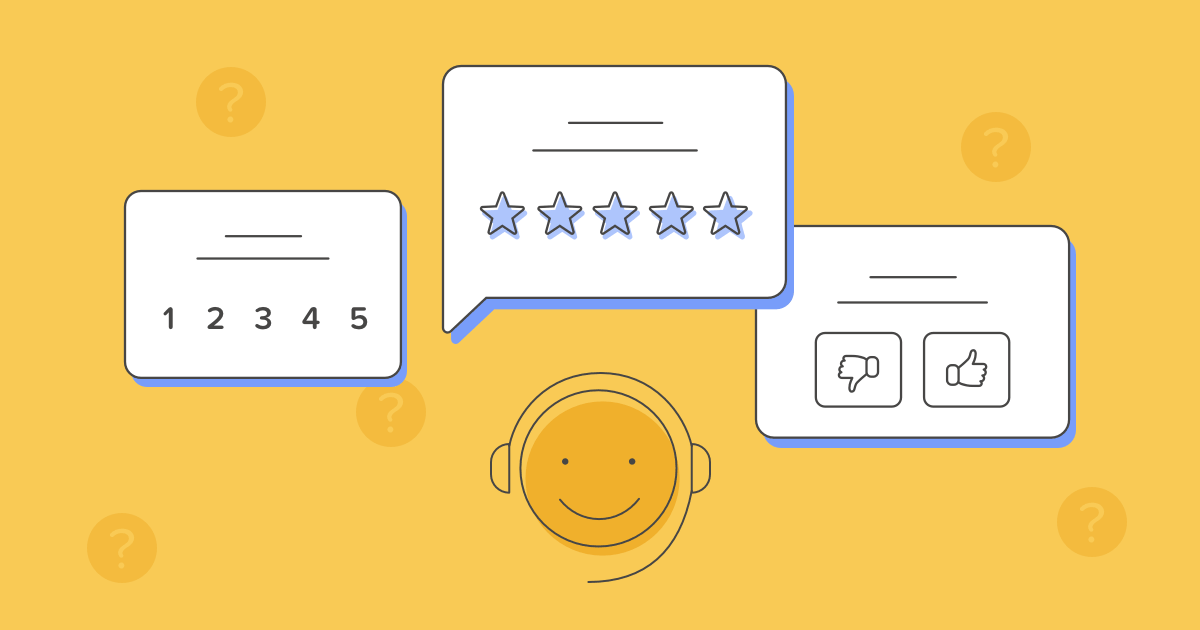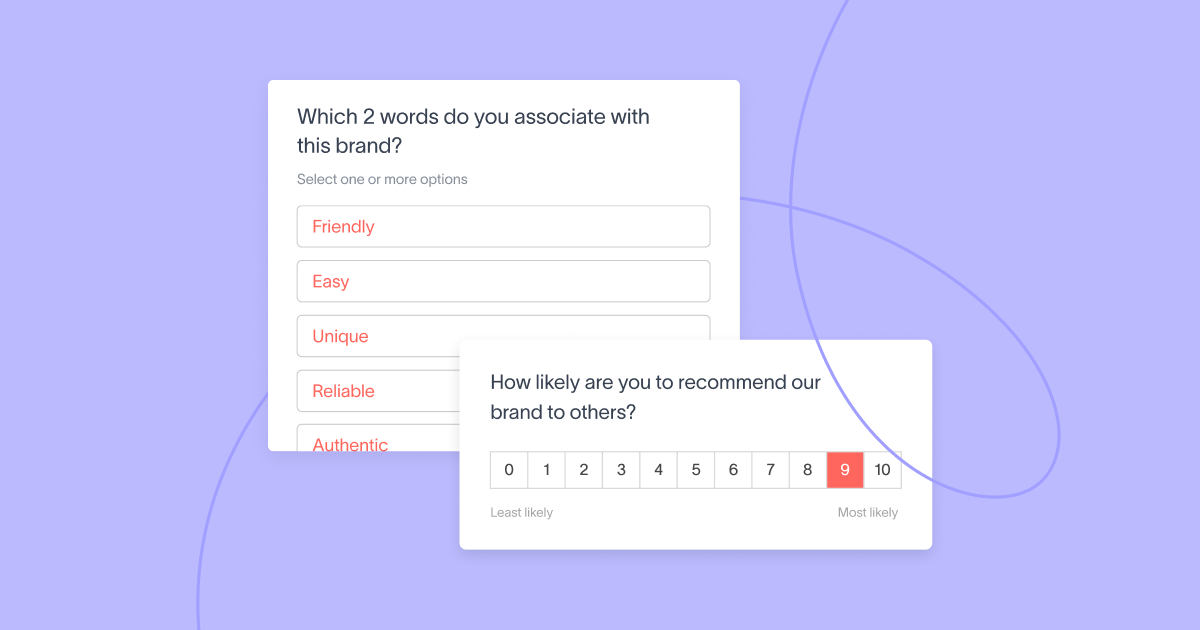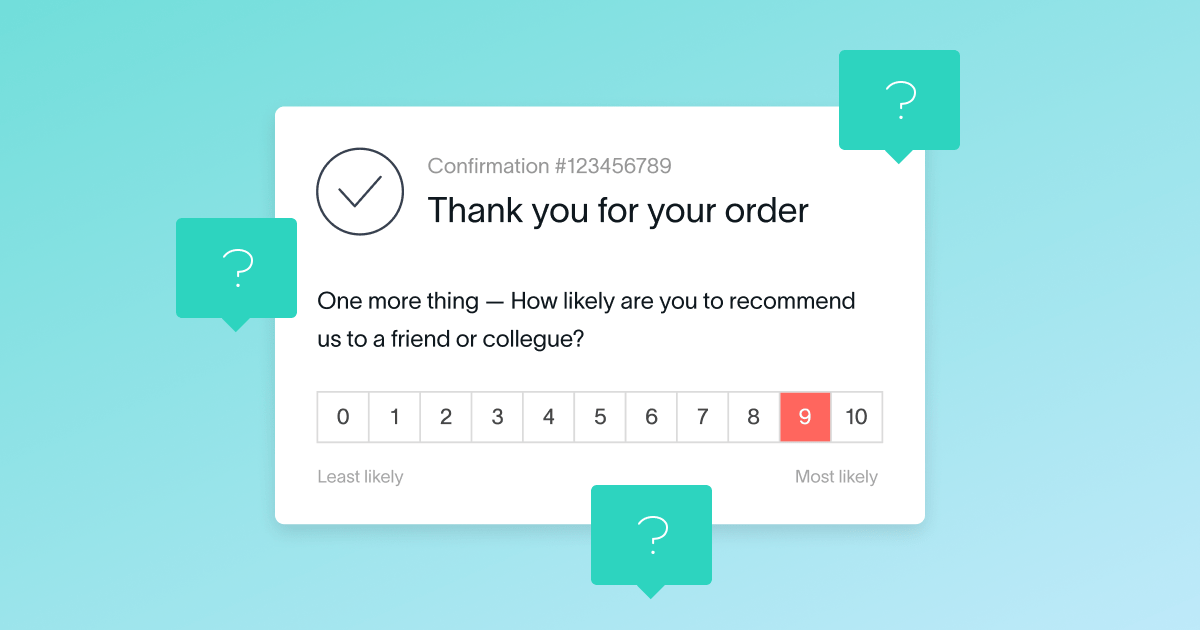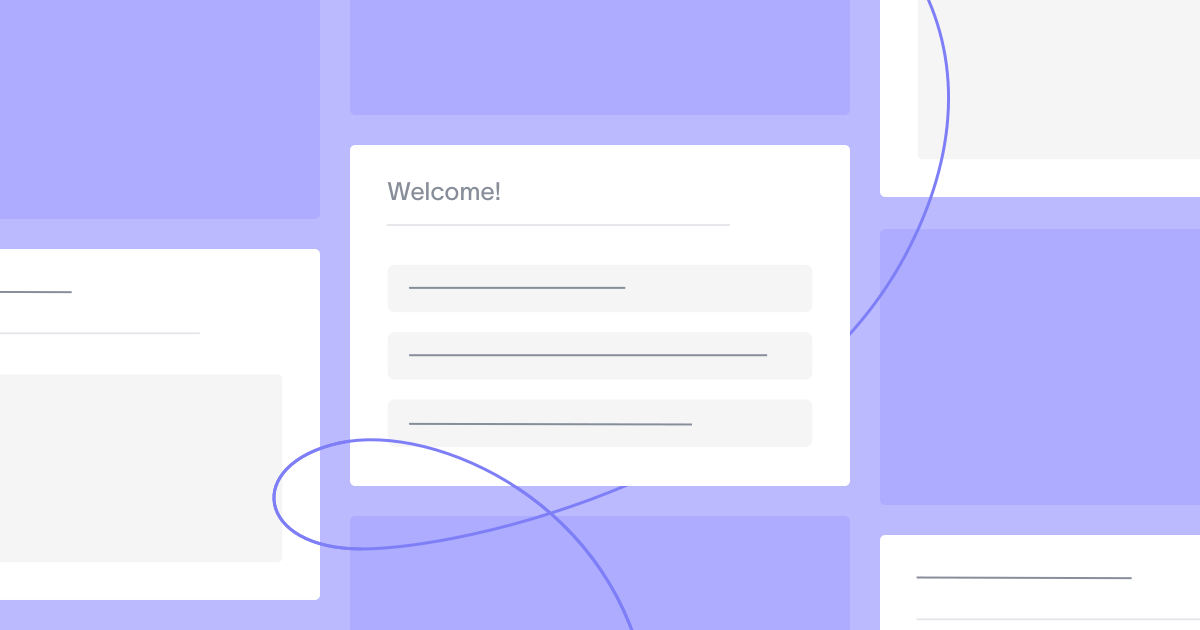You’re faced with many options (and questions) during the survey creation process: What survey type should you use? How should you send your survey? What questions should you ask? And of those, which should be open-ended versus close-ended questions?
Today, we’ll tackle the last topic: how close-ended questions differ from open-ended ones, plus how, when, and why to use them. We’ve also included types and examples of close-ended questions, so you can feel confident creating your own.
What are close-ended questions?
Close-ended questions are designed to elicit straightforward, limited responses from respondents, typically formatted as “yes/no”, “true/false”, or from among a set of predetermined multiple choice options.
For example, a question might ask, “Have you used our service before?” requiring the respondent to select either “Yes” or “No”. These questions work best when you understand the exact topics you want feedback on and aim to gather quantitative data that can be easily segmented for reporting purposes.
Types and examples of close-ended questions
To gather actionable data, it’s important to use the right type of survey question. Here are a few close-ended questions to know:
1. Dichotomous questions
Dichotomous questions, by nature, can only be answered in one of two ways (i.e., a dichotomy is the division between two things that are opposites or entirely different).
Common answers to dichotomous questions include “yes” or “no”; “true” or “false”; “agree” or “disagree”; and so on.
These questions are short and to the point, offer a simple survey experience, and allow for quick and effortless analysis – it’s either one answer or the other.
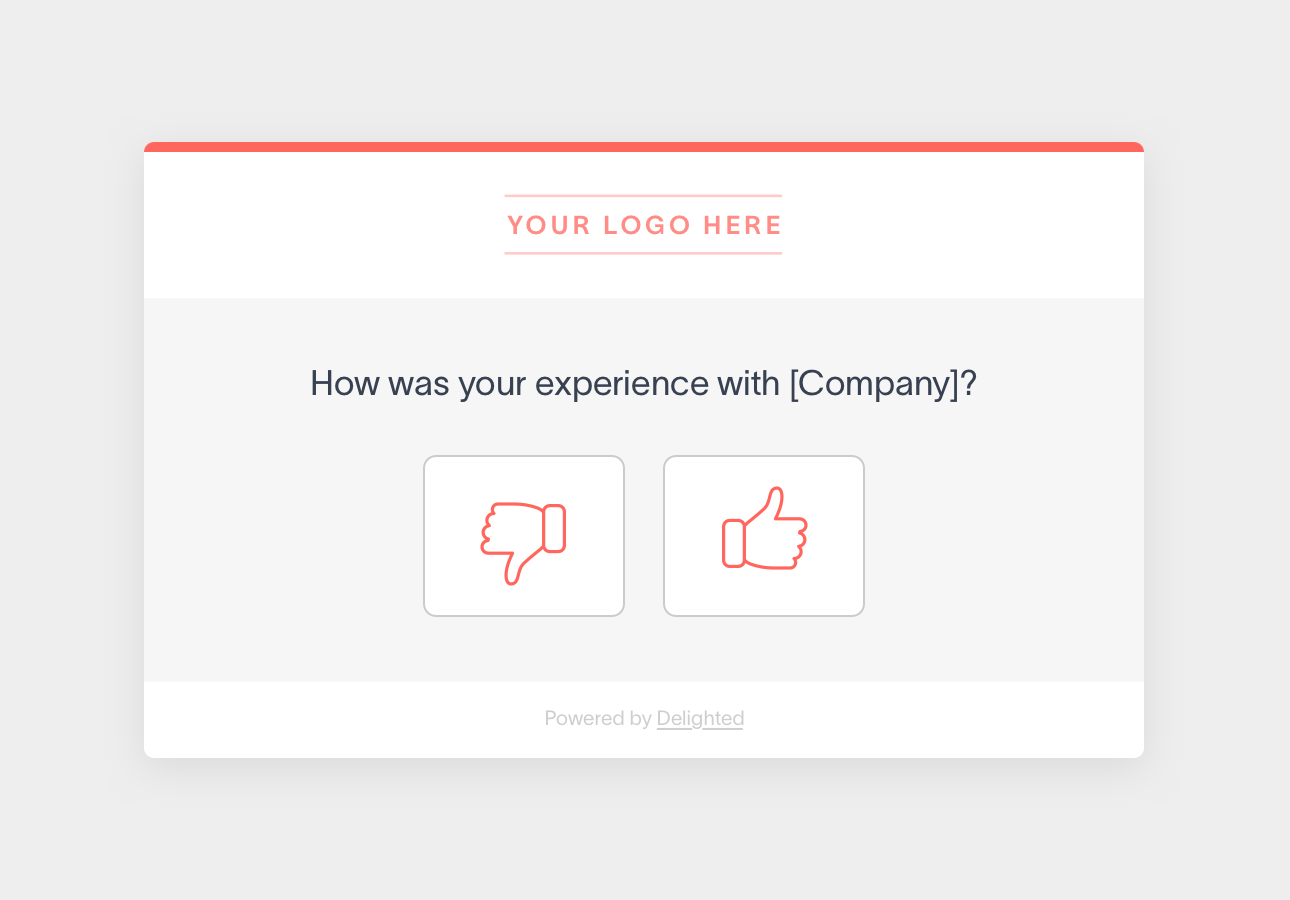
Some examples of dichotomous close-ended questions are:
- Was your support issue resolved?
- Were you satisfied with your latest purchase?
- Have you purchased/used [company’s] product or service in the last 30 days?
- Have you ever used [company] website to purchase a product or service?
Delighted’s Thumbs survey is an example of a dichotomous survey where respondents choose a thumbs up or thumbs down. When used as the initial question, it is always followed by an open-ended question (more on those, below) so people can further clarify their answer. You can also create your own dichotomous questions using the Additional Questions feature.
2. Multiple choice questions
Multiple choice questions provide survey participants with a selection of answers to choose from. Getting specific with the answer options allows for clearer data collection, and therefore, results that are easier to analyze – and take action on.
Multiple choice questions are a great way to gather extra information to help you make new product decisions, understand where you can improve the customer or employee experience, or decide where to advertise to reach your audience.
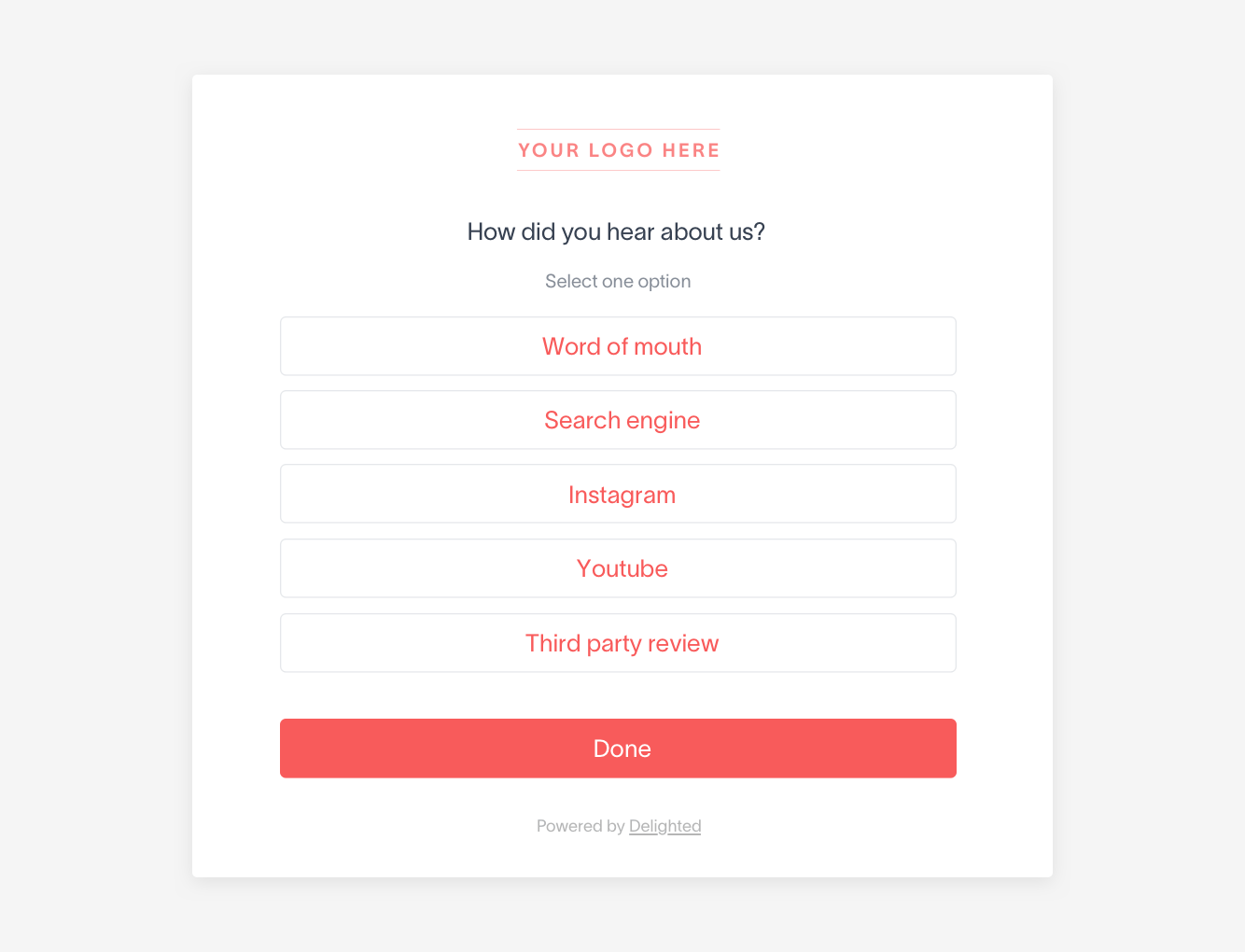
Some examples of multiple choice questions (and possible answers) are:
- How often have you visited our store in the past 12 months? [answers could include options ranging from more than once a week to I do not visit your store]
- How can we improve our benefits package? [answers could include perks or benefits your company is considering for employees]
- How did you hear about us? [answers could include common sources, such as social media, word of mouth, TV, and so on]
The next three question types are all variants of multiple choice questions.
3. Rating scale questions
Rating scale questions help determine how people feel about your company, product, or service. By asking for a rating, you can quantify overall sentiment or agreeableness.
For example, you could ask customers: “How satisfied were you with your ability to find what you were looking for?”
And answers could be:
- Very dissatisfied
- Dissatisfied
- Neither satisfied nor dissatisfied
- Satisfied
- Very satisfied
Your scale doesn’t always need to be represented as a range of numbers – you could use stars, smileys, or any other visual representation that is easily understandable and suits your brand.
If the above looks familiar to you, you might be thinking of satisfaction surveys, which contain a series of survey questions to gauge customer and/or employee satisfaction.
Likert scale questions
Likert scale questions, a type of rating scale question, employ a 3, 5, or 7-point scale that asks respondents how much they agree or disagree with a statement.

For example, you could say: “[Company] made it easy for me to handle my issue.”
Answer choices could be:
- Strongly disagree
- Disagree
- Neither agree nor disagree
- Agree
- Strongly agree
4. Rank order questions
Rank order questions are questions that ask the participant to list their preferences in ascending or descending order.
For example, you could say: “Please rank how familiar you are with the features of our app.” And then list your app features for respondents to rank in numerical order.
5. Checklist-style questions
Checklist-style questions allow survey respondents to select multiple options from a predetermined list of answers. These types of questions require careful analysis, but they’re helpful for capturing a more holistic picture of customer and/or employee sentiment.
When to use close-ended questions
Now that we’ve covered the types of close-ended questions, here are three instances of when to use them:
You want to collect quantitative data
Because close-ended questions offer predetermined answers only, they enable survey creators to assign values (often numerical) to answers that can then be tallied into scores, percentages, or statistics. With quantitative survey data, you can categorize responses quickly and easily pinpoint correlations and trends.
Learn more about this in our qualitative vs quantitative research guide.
You want a specific set of responses
Close-ended questions help you narrow in on a set of responses so you can quantify your data and take action on it.
Here’s an example: You want to understand how much money your employees spend on commuting costs each month. If you asked an open-ended question like, “Tell us how much you spend on commuting.” and employees can answer freely in an open text box, you might get answers that are all over the place—and that would be hard to quantify when it comes to your analysis.
Instead, ask a close-ended question like, “How much do you spend on commuting costs each month?” followed by a range:
- $0-$199
- $200-$299
- $300-$399
- $400-$499
- $500+
The range, AKA a specific set of responses, will help you more accurately analyze and take action on the data you collect.
You’re conducting a large-scale survey
When it comes to surveying, the easier it is to answer your questions the better, specifically for your survey response rate. And this is especially true when you’re conducting a large-scale survey. You want to be able to quickly and easily analyze the data you collect, without having to do much (or any!) manual calculations.
By nature, close-ended questions enable you to do this by supplying participants with preset answers from which to choose.
What are the advantages of using close-ended questions?
There are many advantages to using close-ended questions in your surveys, including:
- The questions themselves take less time to answer which increases your response rate
- The data is easier to analyze and quantify overall sentiment, which means you can act on the feedback faster
- You won’t need to manually sift through qualitative responses and can understand if you’re meeting expectations almost instantly
As you can tell, the advantages are all about ease of use: for participants, the ease of taking the survey; and for you, the ease of analyzing the results.
That said, you might want some qualitative feedback to better understand the “why” behind your data.
What are open-ended questions?
Open-ended questions collect qualitative feedback, which is less about measurement and more about collecting customer and/or employee impressions and opinions. While these types of questions won’t always translate to easy data analysis, they do give you insight into attitudes and motivations.
Examples of open-ended questions
Open-ended questions allow customers and employees to give feedback in their own words. They’re perfect for following up on close-ended questions, so respondents can give more context for their answer.

Here are a few examples:
- Tell me more about why you chose [rating/option].
- How can we improve?
- Is there anything else you would like us to know?
What’s the difference between close-ended and open-ended questions?
Closed-ended questions are more quantitative, and ask survey participants to choose from a list of statistically significant answer options. Open-ended questions are qualitative, and while they don’t easily lend to statistical analysis, they do provide verbatim insights into your company that you may not have been aware of.
The magic question: Which type or types of survey questions should you use? We say, both!
You could use both types of questions to:
- Find patterns with your close-ended questions and learn why they’re occurring with an open-ended question
- Gather anonymous data with close-ended questions and then capture the specific email or product purchased data with open-ended questions
- Get insights from your audience with open-ended questions to create a theory, and then use close-ended questions to determine if your theory was correct
TIP: In case the options you supplied aren’t applicable to the respondent, add an “other” or “fill in the blank” field as part of a multiple choice question. An “other” option is also considered an open-ended question and can reduce the chance of survey bias!
Creating surveys with a mix of close-ended and open-ended questions gives you the best of both worlds – quantitative data you can take action on and qualitative data to understand your customers and employees better.
Ready to put your knowledge of survey questions to use? Start gathering feedback with Delighted’s free online survey maker.



